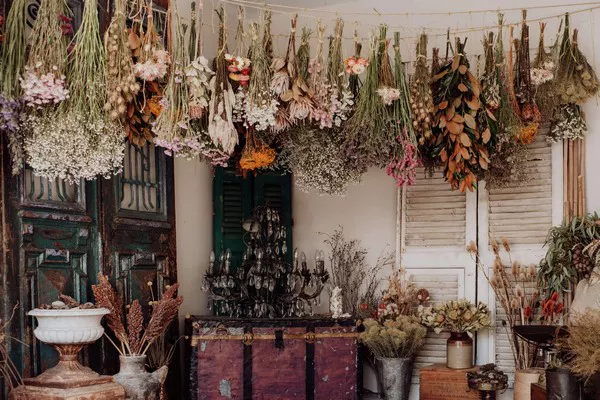Flowers are a beautiful and delicate gift from nature, capable of brightening our homes and lifting our spirits. However, as with all living things, they eventually fade and wilt. If you’ve ever received or purchased a bouquet that has seen better days, don’t despair. There are ways to help with dead flowers and, in some cases, even bring them back to life. In this comprehensive guide, we will explore various methods to revive and preserve your wilting blooms, ensuring that you can enjoy their beauty for as long as possible.
Understanding the Life Cycle of Flowers
Before we delve into the techniques to rejuvenate dead flowers, it’s essential to understand the natural life cycle of blooms. Flowers, once cut, begin to lose moisture and nutrients, leading to wilting and eventual death. However, with proper care and attention, you can extend their lifespan significantly.
Assessing the Damage of Your Flowers
Before implementing any revival method, it’s crucial to assess the condition of your flowers. Different issues require different solutions. Here are some common problems you might encounter:
Wilting: This is the most common issue and is caused by dehydration.
Browning or Yellowing: Discoloration of petals can result from bacterial growth or exposure to ethylene gas.
Drooping: If your flowers are sagging, they might need structural support.
Foul Odor: Unpleasant smells may indicate bacterial or fungal growth.
Dried Out: Extremely dry and crispy petals may require rehydration.
Now, let’s explore ways to address these issues and breathe new life into your flowers.
1. Reviving Wilting Flowers
Re-cut the Stems: Remove the flowers from the vase and re-cut the stems at an angle. This allows for better water absorption. Use sharp, clean scissors or shears for this task.
Change the Water: Empty the vase, clean it thoroughly, and refill it with fresh, lukewarm water. Warm water is more easily absorbed by the flowers than cold water.
Add Flower Food: Many floral arrangements come with a packet of flower food. If you have it, use it. These packets contain nutrients that can help extend the life of your flowers.
Trim Foliage: Remove any leaves or foliage that will be submerged in the water. This prevents bacterial growth and keeps the water clean.
Cool Location: Keep your flowers away from direct sunlight and drafts. A cool spot will slow down the aging process.
2. Addressing Browning or Yellowing Flowers
Remove Affected Petals: Gently pluck or trim the discolored petals using clean, sharp scissors or shears. This prevents the spread of discoloration to healthy petals.
Change the Water: As with wilting flowers, changing the water and adding flower food can help freshen up the bouquet.
Consider Ethylene Sources: Keep flowers away from ethylene-producing sources like ripe fruits, as this gas can accelerate wilting and discoloration.
3. Reviving Drooping Flowers
Support Stems: Insert wooden skewers or floral wire into the stems to provide extra support. Carefully bend the wire to create a “hook” shape that keeps the flowers upright.
Shorten the Stems: Sometimes, overly long stems can cause drooping. Trim the stems slightly and adjust the height of the bouquet in the vase.
4. Addressing Foul Odor of of Flowers
Remove Decomposing Material: Carefully inspect the bouquet and remove any dead or decaying flowers. These can release foul odors and promote bacterial growth.
Change the Water: Frequently changing the water helps keep it clean and free from bacteria.
Add Activated Charcoal: Activated charcoal can help absorb odors and impurities from the water. Place a small amount in a porous bag and hang it in the vase.
5. Reviving Dried-Out Flowers
Submerge in Warm Water: Fill a sink or basin with warm water and submerge the entire bouquet for several hours or overnight. This can help rehydrate the flowers.
Trim and Rehydrate: After soaking, re-cut the stems and place the bouquet in a vase with fresh water and flower food.
Mist the Petals: Use a spray bottle to lightly mist the petals, creating a humid microenvironment around the flowers.
6. Preserving Dying Flowers
Sometimes, it’s not possible to fully revive flowers, but you can preserve their beauty by drying or pressing them:
Drying: Hang the flowers upside down in a dark, dry place with good air circulation. This method works well for flowers like roses, lavender, and baby’s breath.
Pressing: Place flowers between the pages of a heavy book or a flower press. Allow them to dry and flatten over time. This method is ideal for delicate blooms like pansies and daisies.
Conclusion
Flowers, with their ephemeral beauty, can bring joy to any occasion. Knowing how to help with dead flowers not only extends their lifespan but also allows you to enjoy their charm for as long as possible. Whether it’s reviving wilting petals, addressing discoloration, providing structural support, or preserving their beauty through drying or pressing, these techniques can help you make the most of your floral arrangements. By nurturing your blooms and understanding their needs, you can continue to delight in their elegance and fragrance long after they’ve been cut.


